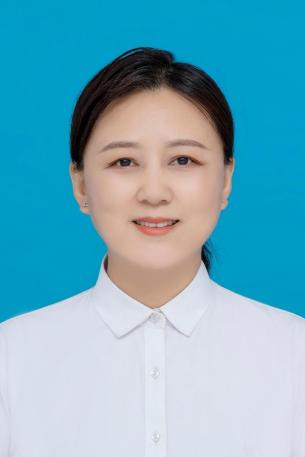教師簡介
| 姓名:吳青 職務: 職稱:講師 電子郵箱:[email protected] | |
個人簡歷 | ||
吳青,博士。主持或參與省自然科學基金、省科技攻關、國家自然科學基金等項目十余項,在Journal of Hazardous Materials等國內(nèi)外重要學術(shù)期刊發(fā)表論文十余篇,參加國際會議若干。 | ||
教育/工作經(jīng)歷 | ||
2015.07-至今河南師范大學環(huán)境學院 2012.09-2015.06 河南師范大學博士 2011.09-2012.08 河南師范大學化學與環(huán)境科學學院 2008.04-2010.03 日本東北大學碩士 | ||
研究領域 | ||
1. 水污染控制 2.區(qū)域可持續(xù)發(fā)展評價 | ||
科研項目情況 | ||
[1] 主持或參與低足跡易降解螯合劑綠色去除污泥重金屬的機制及調(diào)控策略研究,河南省自然科學基金,主持 [2] 基于易降解螯合劑綠色萃取污泥重金屬的篩選和應用,河南省高等學校重點科研項目,主持 [3] 可降解螯合劑去除污泥中重金屬應用技術(shù)開發(fā),河南省重點科技攻關項目,主持 [4] 河南省環(huán)境與社會可持續(xù)發(fā)展的量化評價,河南省軟科學研究計劃項目,主持 [5] 超聲波協(xié)同新型可降解螯合劑強化污泥脫水及重金屬去除的研究,新鄉(xiāng)市科技攻關計劃項目,主持 [6] 亞/超臨界水中活性炭-沸石分子篩復合材料原位負載納米零價鐵對全氟化合物的催化降解機理研究,國家自然科學基金,參與 [7] 淮河上游多環(huán)芳烴的多介質(zhì)污染特征與歸趨,國家自然科學基金,參與 [8] 臭氧-生物活性炭工藝深度處理垃圾滲濾液的研究,河南省省基礎與前沿技術(shù),參與 [9] 臭氧氧化改善難降解廢水生化性的研究,河南省基礎與前沿技術(shù),參與 [10] 高級氧化協(xié)同膜曝氣反應器去除廢水中PPCPs的機制研究,河南省基礎與前沿技術(shù),參與 | ||
代表性論文 | ||
[1] Sun Nan, Wu Qing, Jin Lifang, Zhu Zichen, Sun Jianhui, Dong Shuying, Xie Haijiao, Zhang Chunyan, Cui Yanrui. Hyperbranched magnetic polymer: highly efficient removal of Cr(VI) and application in electroplating wastewater[J]. Frontiers of Chemical Science and Engineering, 2023, 17(10): 1568-1580 [2] Zongwu Wang, Jing Zhang, Qing Wu, Xuexue Han, Mengna Zhang, Wei Liu, Xinding Yao, Jinglan Feng, Shuying Dong, Jianhui Sun. Magnetic supramolecular polymer: Ultrahigh and highly selective Pb(II) capture from aqueous solution and battery wastewater[J]. Chemosphere, 2020, 248(6): 126042 [3] Zongwu Wang, Qing Wu, Jing Zhang, Huan Zhang, Jinglan Feng, Shuying Dong, Jianhui Sun. In situ polymerization of magnetic graphene oxide-diaminopyridine composite for the effective adsorption of Pb(II) and application in battery industry wastewater treatment[J]. Environmental Science and Pollution Research, 2019, 26: 33427-33439 [4] Yanrui Cui, Qing Wu, Mengsi Yang, Fengling Cui. Three-dimensional excitation-emission matrix fluorescence spectroscopy and fractions of dissolved organic matter change in landfill leachate by biological treatment[J]. Environmental Science and Pollution Research, 2016, 23: 793-799 [5] Qing Wu, Yanrui Cui, Qilu Li, Jianhui Sun.Effective removal of heavy metals from industrial sludge with the aid of a biodegradable chelating ligand GLDA[J]. Journal of Hazardous Materials, 2015, 283(2): 748-754 [6] Qing Wu, Gaoqi Duan, Yanrui Cui, Jianhui Sun. Removal of heavy metal species from industrial sludge with the aid of biodegradable iminodisuccinic acid as the chelating ligand[J]. Environmental Science and Pollution Research, 2015, 22(2): 1144-1150 [7] Yanrui Cui, Qing Wu, Songna Xiao, FenglingCui. Optimum Ozone Dosage of Preozonation and Characteristic Change of Refractory Organics in Landfill Leachate[J]. Ozone: Science & Engineering, 2014, 36: 427-434 [8] Shaoguang Geng, Qing Wu, Lei Shi, Fengling Cui. Spectroscopic study one thiosemicarbazone derivative with ctDNA using ethidium bromide as a fluorescence probe[J]. International Journal of Biological Macromolecules. 2013, 60: 288-294 [9]吳青,賈炎,崔延瑞,鮑林林,馬凱麗,康威,張恒濤,鄒旭艷. 生物活性炭對SBR生物脫氮過程中N2O產(chǎn)生的影響[J]. 中國給水排水,2021, 37(9): 33-39+45 [10]吳青,崔延瑞,湯曉曉,楊慧娟,孫劍輝. 生物可降解螯合劑谷氨酸N,N -二乙酸四鈉對污泥中重金屬萃取效率的研究[J].環(huán)境科學, 2015, 36(5): 1733-1738 | ||
會議 | ||
[1] Qing Wu, Dinil Pushpalal. Evaluation of Sustainable Development Using Ecological Footprint and Other Indicators, The 6th Meeting of The Institute of Life Cycle Assessment, 2011, Japan [2] Qing Wu, Dinil Pushpalal. Evaluation of Sustainable Human Development Using Ecological Footprint and Human Development Index: A Case Study of Chinese Provinces, Footprint Forum 2010, 2010, Italy [3] Dinil Pushpalal, Qing Wu. Ecological Footprint and Human Development Index as a Measurement of Sustainable Development: Case Study of Three Selected Chinese Provinces, The Fourth International Scientific-Practical Conference, 2009, Ukraine [4] Wu Qing. Study on Human Development Index and Environmental Load of China: Focusing on Henan, Hunan and Zhejiang Provinces, The 16th Meeting of Tohoku University Society for International Cultural Studies, 2009, Japan | ||


